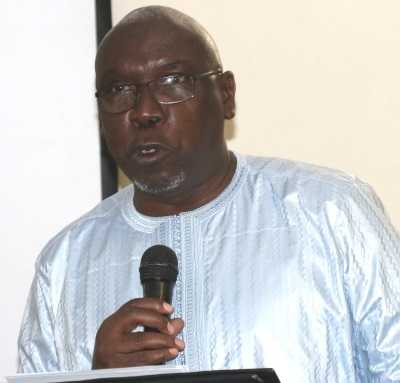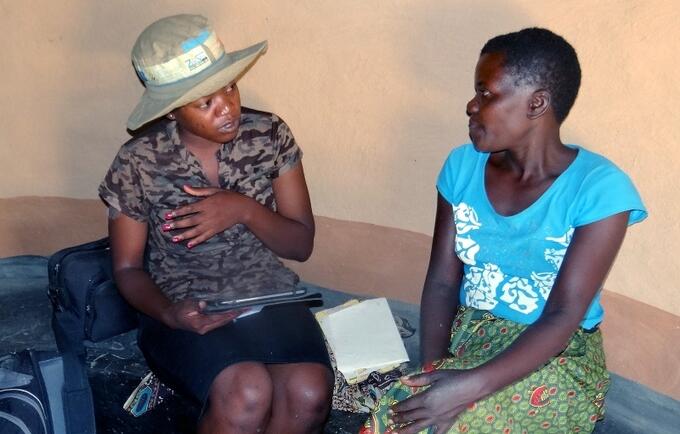Harare, 27 June, 2016 – Latest findings from the 2015 Zimbabwe Demographic and Health Survey are showing that Zimbabwe is making progress in improving access to access to Sexual Reproductive Health services but more effort is still required to consolidate these gains and invest in other areas they are still lagging behind.

The ZDHS is a very important household based-survey that collects valuable and relevant demographic and health data that provides countries with reliable and timely data which can support the formulation of development policies and programs.
On maternal health the ZDHS has shown that maternal mortality has declined to 651 per 100 000 live births from 960 per 100 000 live births in 2010. The Government of Zimbabwe target is to reduce maternal mortality to 326 by 2020. The ZDHS also reported an increase in skilled birth attendance at delivery from 66.2% to 78% while women attending at least 4 or more Antenatal Natal Care visits increased from 64.8% in the last ZDHS to 75.7%.
The ZDHS preliminary findings on Adolescent Sexual Reproductive Health show that adolescent fertility rate remains high among young girls in the 15-19 age group. Nearly 1 in 10 young girls give birth every year. The results are showing that adolescent pregnancy varies widely according to wealth, geographic location and education. For example, teenage fertility is twice higher among girls with primary education than those with secondary education. On a positive note findings show that more young people are protecting themselves better against HIV. The 2015 ZDHS reported 65.7% of young men who had more than one partner in the last 12 months using a condom compared to 50.1%.

The ZDHS is showing some positive results in the area of Gender Based Violence (GBV) with findings showing that the percentage of women who experienced violence in the last 12 months has decreased from 18.4% in 2010 to 14.5% in 2015. Another key finding is that women with secondary education experienced less violence when compared with those with primary education so education is seen as a protective factor for women. However, on a note for concern the 2015 ZDHS reports that more than 1 in 3 women have experienced physical violence since the age of 15.
On Family Planning ZDHS 2015 reports that that there was a 14% increase in the use of modern contraceptive methods among married women and a 25% increase among married young girls from the ages of 15-19 years. Although family planning method mix remains dominated by the pill ZDHS is showing us that utilization of implants more than doubled in the past 5 years from 2.7% to 9.6%. This is the result of the national efforts to promote long acting family planning methods.
On HIV/AIDS ZDHS is showing a 50% increase in testing within the last year for both women and men. HIV testing among women in the 15-49 age group increased to 79.6% in 2015 from 48.8% five years ago while for men in the same age group increased to 62.4% compared to 35.9% in 2010. Although the mean number of lifetime sexual partners did not change significantly and the percentage of men having multiple sexual partners has increased from 10.6 to 14.3% between 2010 and 2015, the ZDHS results show increased protective behaviours as condom use among young men with multiple partners increased by one third.
Speaking at the launch of the 2015 ZDHS Zimbabwe Statistical Agency Director General Mr Mutasa Dzinotizei said the findings from the survey are key and will help the Government of Zimbabwe and development partners to develop relevant health related programmes and interventions.
UNFPA Country Representative Cheikh Tidiane Cisse said it is commendable that there has been some progress in areas such as maternal health, HIV testing, access to family planning and Gender Based Violence.
“We should celebrate these achievements but we must not relax as there is still more work for us to do and more investment needed,” he said. “The 2015 ZDHS has brought very key findings that will certainly inform our work and help us reflect on some of those areas where we need to invest more and areas where gains need to be consolidated.”
As UNFPA we stand committed to ensuring all women realize their full potential in life through equitable access to sexual and reproductive health rights and services.
He said UNFPA Zimbabwe is proud to be supporting the Government of Zimbabwe with interventions that have contributed to the some of this progress and expressed gratitude to development partners who support this work.

“Our heart-felt gratitude goes to development partners who continue to support our programmes and ensure we improve the lives of women and young people in Zimbabwe. As UNFPA we stand committed to ensuring all women realize their full potential in life through equitable access to sexual and reproductive health rights and services.”
The ZDHS was supported by the following partners; the Australian Agency for International Development, European Union, Government of Sweden, IRISH Aid, Royal Danish Embassy, United States Agency for International Development (USAID), the United Nations Development Programme (UNDP), the United Nations Children’s Fund (UNICEF) and the United Kingdom Department for International Development (UKaid).
Fact Sheets
ZDHS 2015 Key Findings Maternal Health
ZDHS 2015 Key Findings HIV and Sexual and Reproductive Health
ZDHS 2015 Key Findings Family Planning
ZDHS 2015 Key Findings Adolescent Sexual and Reproductive Health
By Bertha Shoko




